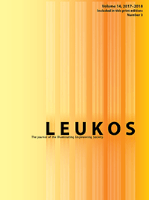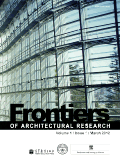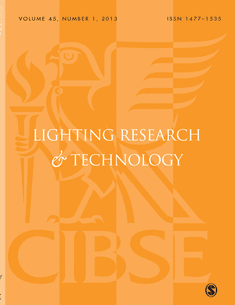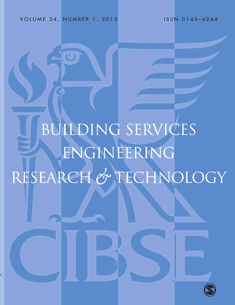
Leukos
Scope & Guideline
Illuminating the Frontiers of Atomic and Molecular Physics
Introduction
Aims and Scopes
- Lighting Design and Performance Evaluation:
The journal covers methodologies for assessing lighting design effectiveness, including simulations, experimental validations, and field studies to evaluate light performance in different contexts. - Human-Centric Lighting Research:
Research on the effects of light on human physiology and psychology is a core focus, exploring how lighting impacts mood, cognition, and overall well-being. - Innovative Lighting Technologies:
The journal emphasizes advancements in lighting technologies, including LED systems, dynamic lighting controls, and new light source developments, which contribute to energy efficiency and sustainability. - Daylighting and Natural Light Utilization:
A significant theme is the optimization of natural light in built environments, including studies on daylighting strategies and their impacts on visual comfort and energy consumption. - Environmental and Aesthetic Considerations:
Leukos publishes work that considers the environmental impact of lighting choices and the aesthetic implications of light in architectural and urban contexts.
Trending and Emerging
- Dynamic and Personalized Lighting:
There is a growing emphasis on dynamic lighting solutions that can be tailored to individual preferences and behaviors, highlighting the importance of personalized lighting in enhancing user experience. - Impact of Light on Mental Health:
Research exploring the relationship between lighting conditions and mental health outcomes is gaining traction, particularly in the context of light therapy and its applications for mood regulation and cognitive function. - Integration of Virtual Reality in Lighting Studies:
The use of virtual reality as a tool for studying lighting effects and user perceptions is emerging as a significant trend, providing innovative ways to simulate and analyze lighting scenarios. - Sustainable Lighting Practices:
There is an increasing focus on sustainability in lighting design, including the use of eco-friendly materials, energy-efficient technologies, and strategies to minimize light pollution. - Interdisciplinary Approaches to Lighting Research:
The journal is seeing a rise in interdisciplinary studies that combine insights from psychology, architecture, environmental science, and technology to address complex lighting challenges.
Declining or Waning
- Traditional Lighting Metrics:
There has been a noticeable decline in studies focused solely on traditional lighting metrics, such as illuminance levels and basic lumen calculations, as the field increasingly embraces more complex and human-centric approaches. - Static Lighting Solutions:
Research centered around static lighting systems without consideration for dynamic or adaptive strategies is becoming less prominent, as the trend shifts towards exploring responsive lighting designs. - Generalized Lighting Guidelines:
Broad, generalized guidelines for lighting design are less frequently published, with a move towards more nuanced, context-specific recommendations that take into account user experience and environmental factors.
Similar Journals

A + U-ARCHITECTURE AND URBANISM
Bridging Aesthetics and Society in Urban DevelopmentA + U - ARCHITECTURE AND URBANISM, published by A & U PUBL CO LTD, is a prominent Japanese journal that focuses on the interdisciplinary nexus of architecture, urban studies, and the visual arts. With an ISSN of 0389-9160, this publication aims to provide a platform for innovative research and discourse in the challenging and ever-evolving landscapes of architecture and urbanism. Despite being placed in Q4 of various categories according to Scopus ranks, this journal holds significance in fostering global dialogues on urban transformations and design strategies through its diverse range of articles. The journal emphasizes not only the aesthetic dimensions of architecture but also the social and cultural implications of urban development, thereby appealing to a broad audience of researchers, professionals, and students dedicated to these fields. With a commitment to enriching the academic community, A + U serves as a vital resource for those seeking to explore and contribute to the future of urban spaces and architectural practices.

Advances in Building Energy Research
Elevating Energy Efficiency through Scholarly ExplorationAdvances in Building Energy Research is a pivotal journal dedicated to the scholarly exploration of energy efficiency and sustainable practices within the building and construction sector. Published by Taylor & Francis Ltd from the United Kingdom, this journal provides a rich platform for researchers, industry professionals, and students interested in the latest advancements and methodologies that drive energy conservation in architecture and engineering. With an impressive 2023 Scopus ranking of #64 out of 223 in the Building and Construction category and a notable Q2 category quartile, the journal occupies a significant position in its field, emphasizing high-quality, peer-reviewed research that meets the needs of a global audience. Though it operates under a subscription model, its contributions are invaluable for advancing knowledge that addresses the urgent challenges of energy consumption and sustainability in built environments. Spanning research published from 2007 to 2024, this journal continues to be an essential resource for those seeking innovative solutions and insights into building energy performance.

International Journal of Design
Pioneering New Horizons in Design ApplicationsThe International Journal of Design, published by National Taiwan University of Science and Technology, is a premier open-access journal that has been contributing to the field since 2007. With an ISSN of 1991-3761 and E-ISSN of 1994-036X, this journal focuses on the interdisciplinary nature of design and its applications across various domains including Computer Graphics, Industrial and Manufacturing Engineering, as well as Visual Arts. The journal has consistently achieved high rankings, including being placed in the top quartile (Q1) for several categories in 2023, reflecting its significance in academia and its impact on contemporary design research. Offering wide-ranging access options, the International Journal of Design serves as a valuable resource for researchers, professionals, and students looking to explore innovative design practices and theories. With its scope spanning both artistic and industrial applications, this journal is dedicated to fostering advancements in design and providing a platform for scholarly discussions that bridge the gap between theory and practice.

Frontiers of Architectural Research
Transforming Ideas into Architectural PracticeFrontiers of Architectural Research, published by KEAI PUBLISHING LTD, stands at the forefront of interdisciplinary scholarship, addressing contemporary challenges in the fields of architecture, urban studies, building and construction, and archaeology. Since its establishment in 2012, this open-access journal has rapidly gained recognition, achieving prestigious rankings in the 2023 category quartiles, including Q1 placements in both Architecture and Archaeology. With an impressive Scopus rank of #5 out of 354 in Archaeology and #10 out of 189 in Engineering - Architecture, it demonstrates its significant influence and contribution to advancing architectural research. Frontiers of Architectural Research embraces a broad scope that fosters innovative discourse and practical solutions, catering to a diverse audience of researchers, professionals, and students keen on exploring the intersection of culture, environment, and technology. By ensuring immediate access to research findings, the journal not only enhances the visibility of scholarly work but also encourages collaborative dialogues that shape the future of architectural practice.

INDOOR AND BUILT ENVIRONMENT
Exploring the Intersection of Indoor Quality and Human HealthINDOOR AND BUILT ENVIRONMENT is a prestigious peer-reviewed journal published by SAGE PUBLICATIONS LTD, focusing on the interdisciplinary fields of indoor environmental quality, human health, and sustainable built environments. With an ISSN of 1420-326X and an E-ISSN of 1423-0070, the journal has been a significant contributor to research and knowledge dissemination since its inception in 1992, continuing through to 2024. Positioned in the Q2 category of public health, it ranks impressively at #122 out of 665 in the Scopus metrics for Medicine, showcasing its influence and relevance in the field with an 81st percentile standing. While the journal does not currently offer open access options, it remains a vital resource for researchers, professionals, and students eager to explore the critical interplay between indoor environments and public health. With its comprehensive coverage and a commitment to high-quality research, INDOOR AND BUILT ENVIRONMENT plays an essential role in advancing knowledge and practices that contribute to healthier living and working spaces.

IEEE Computer Architecture Letters
Illuminating the Future of Computer Architecture.IEEE Computer Architecture Letters is a distinguished academic journal published by the IEEE Computer Society, focusing on the dynamic field of computer architecture. With its ISSN 1556-6056 and E-ISSN 1556-6064, this journal has been a vital platform for disseminating groundbreaking research since its inception in 2002. As of 2023, it holds an impressive impact factor, being ranked Q2 in Hardware and Architecture, placing it among the top tier of journals in this domain (Scopus Rank #74/177). The journal aims to promote innovative ideas and developments in computer architecture that drive advancements in technology and engineering. Although it does not currently offer open access, it remains a pivotal resource for researchers, industry professionals, and students keen on exploring emerging trends and methodologies. Each published article contributes to a deeper understanding of hardware design, performance optimization, and architectural innovations, establishing IEEE Computer Architecture Letters as a cornerstone of academic excellence in the field.

Boletin Academico-Revista de Investigacion y Arquitectura Contemporanea
Unveiling New Dimensions in Architectural and Cultural Studies.Boletin Academico-Revista de Investigacion y Arquitectura Contemporanea is a distinguished journal published by SIELAE & UNIV CORUNA, Fac Filologia, focusing on the interconnectivity of contemporary architecture, cultural studies, and visual arts. With an E-ISSN of 2173-6723, this open-access publication serves as an essential resource for researchers, academics, and professionals eager to explore innovative perspectives and methodologies in these dynamic fields. Spanning a commendable period from 2016 to 2023, the journal demonstrates a strong academic footprint, ranked in the Q2 category for both Architecture and Cultural Studies, and holds a prestigious Q1 ranking in Visual Arts and Performing Arts. With Scopus rankings reflecting its growing influence—particularly in Visual Arts and Architecture—Boletin Academico delivers a platform that is not only academically rigorous but also culturally relevant, encouraging discourse that shapes the future of contemporary architectural and artistic practices. The journal’s commitment to open access further enhances its appeal, ensuring that groundbreaking research is readily available to an extensive audience.

Architect
Innovating Insights for Architects and DesignersArchitect is a publication dedicated to the diverse and evolving field of architecture and design, presented by the reputable HANLEY WOOD, LLC. Since its inception in 1975, the journal has traversed critical periods in architecture, offering valuable insights and research that cater to both practitioners and academics alike. The journal holds a Q4 ranking in both Architecture and Visual Arts and Performing Arts, indicating its niche presence within the crowded scholarly landscape. Despite its recent rankings within the Scopus, where it lies in the lower percentiles of the architecture category, the Architect journal provides platforms for innovative discussions and explorations in design, helping to shape the discourse in the architectural community. While the journal is currently accessible via traditional subscription models, it remains a critical resource for those seeking to bridge practice and theory in architecture. As it continues to evolve beyond its historical publication periods, Architect aims to nurture a rich environment for professional growth, scholarship, and dialogue among researchers, designers, and students engaged in the dynamic world of architecture.

Lighting Research & Technology
Advancing Sustainable Solutions in IlluminationLighting Research & Technology is a pivotal journal in the domain of electrical and electronic engineering, published by the renowned SAGE Publications Ltd. Established in 1969, it has continuously served as a platform for innovative research and advancements in lighting technology, with a strong emphasis on enhancing the quality, sustainability, and efficiency of lighting systems. With an impressive impact factor placing it in the Q2 quartile of its category, this journal ranks #238 out of 797 in the Scopus database, reflecting its substantial influence and contribution to the field. The journal offers comprehensive insights into various aspects of lighting, including photometric techniques, illumination design, and the impact of lighting on health and well-being. Although not an open-access journal, it provides valuable subscription-based content that caters to researchers, professionals, and students dedicated to pushing the boundaries of lighting technology. By engaging with the articles published in Lighting Research & Technology, readers are afforded the opportunity to stay abreast of the latest developments and best practices in this vital area of study.

Building Services Engineering Research & Technology
Unveiling Insights for a Greener Future in ConstructionBuilding Services Engineering Research & Technology is a leading journal published by SAGE Publications Ltd, dedicated to advancing the field of building services engineering. With an ISSN of 0143-6244 and an E-ISSN of 1477-0849, the journal has established itself as a vital resource since its inception in 1980, operating as an essential platform for disseminating high-quality research and technological innovations up to 2024. The journal is well-respected within the academic community, reflected in its Q2 category ranking in Building and Construction and a commendable 67th percentile rank among the 223 journals in its field, according to Scopus. Although it does not offer open access, it provides extensive insights and rigorous studies that are invaluable for researchers, practitioners, and students alike. As a central hub for the exploration of cutting-edge methods and principles in building services, the journal aims to foster a better understanding of sustainable and innovative practices within the industry.